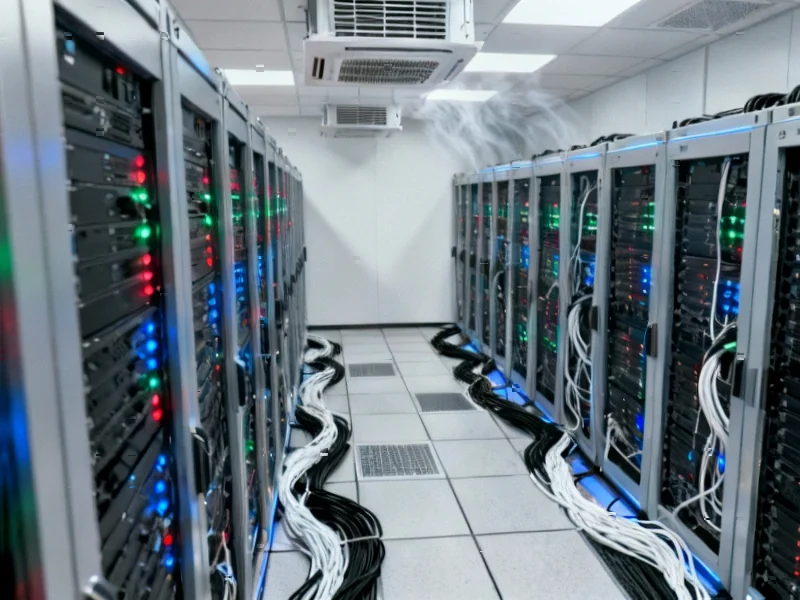According to Financial Times News, Meta and Blue Owl Capital established a joint venture called Beignet Investor LLC that issued the largest corporate bond in US history at $27.3 billion on October 16. The financing will build the “Hyperion” data center in Louisiana, which will initially consume 2 gigawatts of power and potentially scale to 5 gigawatts—enough energy for five million American homes. The bond features an amortizing structure maturing in May 2049 with a 6.58% coupon, backed by Meta’s 20-year lease commitment starting June 1, 2029. S&P granted the venture an A+ rating based on Meta’s guarantees, while Pimco purchased approximately $18 billion of the offering. This landmark transaction represents a significant evolution in how massive AI infrastructure projects are financed.
Table of Contents
The Unprecedented Scale of AI Infrastructure
The Hyperion project’s energy requirements reveal just how power-intensive the AI revolution has become. A 5-gigawatt data center represents approximately 1% of total US data center electricity consumption projected for 2025, concentrated in a single facility. This scale reflects Meta’s aggressive $100 billion AI supercluster push to compete in the generative AI race against Google, Microsoft, and Amazon. The energy demands are so substantial that they’re reshaping regional power grids and forcing utilities to reconsider generation capacity planning. Unlike traditional data centers that might consume 20-50 megawatts, AI training clusters require orders of magnitude more power due to the computational intensity of large language model training and inference workloads.
Financial Engineering Meets Project Finance
This deal represents a sophisticated blending of corporate finance, project finance, and structured credit techniques rarely seen in investment-grade markets. The complex structure creates bankruptcy-remote vehicles that isolate risk while leveraging Meta’s creditworthiness through lease guarantees rather than direct corporate obligations. What makes this particularly innovative is how it navigates accounting treatment—Meta achieves off-balance sheet treatment for what effectively functions as corporate debt, while bond investors receive what amounts to a quasi-asset-backed security with corporate credit enhancement. This structural creativity allows Meta to maintain financial flexibility while securing massive capital for critical infrastructure.
Reshaping the $174 Trillion Bond Market
The Hyperion financing could catalyze a broader transformation in how large-scale infrastructure projects are funded. Traditional corporate bonds have become increasingly standardized, while private credit has absorbed more complex structures. This deal demonstrates that public bond markets can accommodate sophisticated project finance features like amortizing structures, cash waterfalls, and reserve accounts when properly structured. The S&P rating methodology applied here establishes a precedent for future hybrid transactions. However, the 144A-for-Life structure creates index eligibility challenges that may limit broader market participation until Bloomberg and other index providers adapt their inclusion criteria.
Hidden Risks in Plain Sight
While the structure appears robust, several underappreciated risks deserve scrutiny. The single-asset concentration creates vulnerability to technological obsolescence—what happens if quantum computing or other breakthroughs render current AI infrastructure designs obsolete before 2049? The energy requirements also create regulatory risk as governments increasingly focus on data center sustainability and carbon emissions. Furthermore, the single-rating dependency (only S&P rated the deal) contrasts with market norms where 98% of high-grade bonds carry multiple ratings. This raises questions about whether other agencies had reservations about the structural complexity or accounting treatment.
The AI Infrastructure Arms Race
Meta’s approach reflects strategic positioning in the intensifying competition for AI supremacy. By using creative financing rather than balance sheet debt, Meta preserves capacity for other strategic initiatives while locking in long-term infrastructure. The Hyperion announcement positions Meta to compete with Microsoft’s projected $100 billion AI data center spending and Google’s similar infrastructure expansion. This financing model may become template for other tech giants seeking to build specialized AI infrastructure without straining their corporate debt profiles. The structure effectively allows Meta to leverage its credit rating for infrastructure financing while maintaining operational control.
The New Era of Infrastructure Finance
The Hyperion deal likely represents the beginning of a broader trend rather than a one-off transaction. As AI, climate tech, and other capital-intensive technologies mature, we should expect more hybrid structures that bridge public markets and private capital. The success of this offering—trading at 109.47 cents on the dollar—demonstrates investor appetite for complex but well-structured infrastructure investments. However, the current credit cycle’s maturity raises questions about whether this represents smart financial engineering or peak-market exuberance. As industry analysts note, the true test will come when these long-dated projects face their first major stress, whether from technological disruption, regulatory changes, or macroeconomic shifts.



